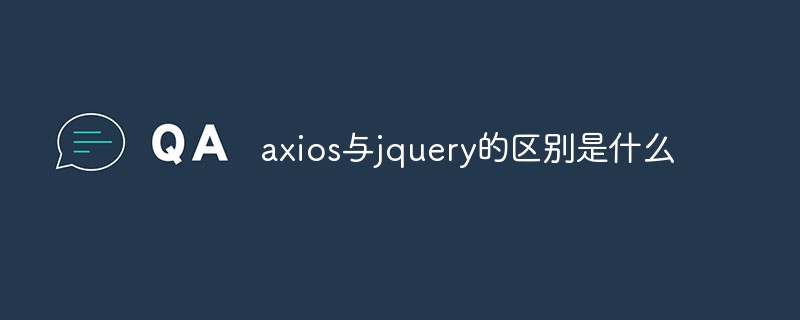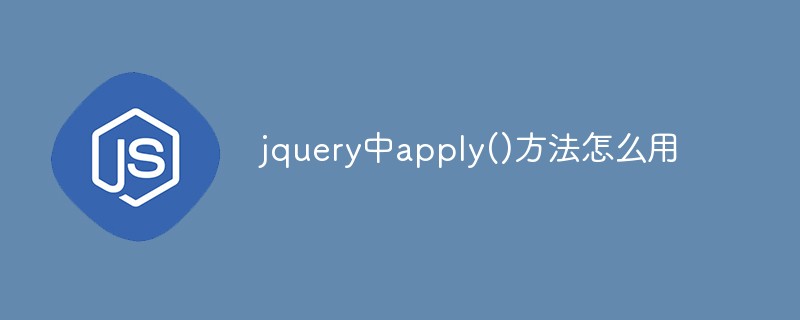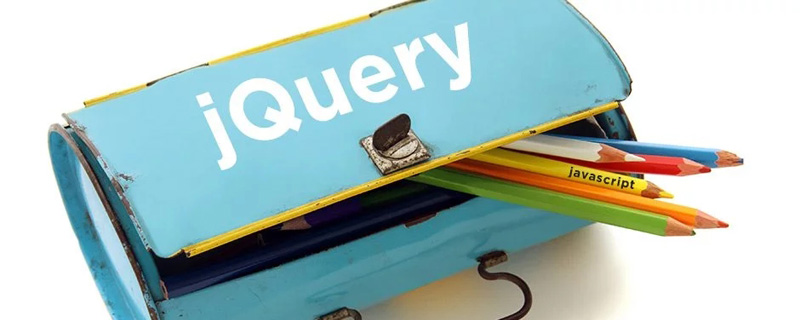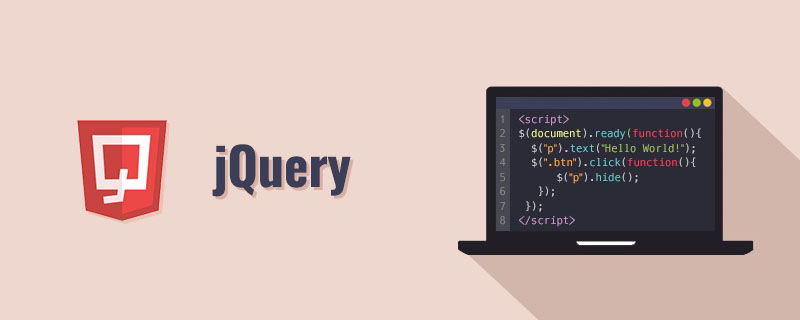 Web Front-end
Web Front-end JS Tutorial
JS Tutorial In-depth analysis of the deferred.promise() method of Deferred in jQuery_jquery
In-depth analysis of the deferred.promise() method of Deferred in jQuery_jquerydeferred.promise() and .promise()
The syntax of these two APIs is almost the same, but there are big differences. deferred.promise() is a method of Deferred instance, which returns a Deferred.Promise instance. A Deferred.Promise object can be understood as a view of the deferred object. It only contains a set of methods of the deferred object, including: done(), then(), fail(), isResolved(), isRejected(), always() ,These methods can only observe the state of a deferred, but cannot change the internal state of the deferred object. This is very suitable for API encapsulation. For example, the holder of a deferred object can control the state of the deferred state (resolved or rejected) according to his own needs, but he can return the Promise object of this deferred object to other observers, and the observers can only observe the changes in the state. The corresponding callback function, but cannot change the internal state of the deferred object, thus providing good isolation protection.
deferred.promise()
$(function(){
//
var deferred = $.Deferred();
var promise = deferred.promise();
var doSomething = function(promise) {
promise.done(function(){
alert('deferred resolved.');
});
};
deferred.resolve();
doSomething(promise);
})
deferred.promise() can also accept an object parameter. At this time, the incoming object will be assigned to the Promise method and returned as the result.
// Existing object
var obj = {
hello: function( name ) {
alert( "Hello " + name );
}
},
// Create a Deferred
defer = $.Deferred();
// Set object as a promise
defer.promise( obj );
// Resolve the deferred
defer.resolve( "John" );
// Use the object as a Promise
obj.done(function( name ) {
this.hello( name ); // will alert "Hello John"
}).hello( "Karl" ); // will alert "Hello Karl"
deferred.promise() just prevents other code from changing the state of this deferred object. It can be understood that the deferred promise object returned by the deferred.promise() method does not have resolve, reject, progress, resolveWith, rejectWith, progressWith methods that can change the state. You can only use done, then, fail and other methods to add handlers. Or judge the status.
deferred.promise() cannot change the state of the deferred object, nor does it ensure that the current state remains unchanged. It only ensures that you cannot change the state of the deferred object through the deferred promise object returned by deferred.promise(). If we directly return dtd here, it will still work. The .done processing function will still wait until dtd.resolve() before executing it.
For the specific example in that blog, if we change the code to the following form:
var dtd = $.Deferred(); // 新建一个deferred对象
var wait = function(dtd){
var tasks = function(){
alert("执行完毕!");
dtd.resolve(); // 改变deferred对象的执行状态
};
setTimeout(tasks,5000);
return dtd;
};
$.when(wait(dtd))
.done(function(){ alert("哈哈,成功了!"); })
.fail(function(){ alert("出错啦!"); });
The result of this execution is the same as the result of returning dtd.promise previously.
What’s the difference? If we change the code of $.when to this:
var d = wait(dtd);
$.when(d)
.done(function(){ alert("哈哈,成功了!"); })
.fail(function(){ alert("出错啦!"); });
d.resolve();
We will find that alert("Haha, successful!") will be executed immediately, but "execution completed" will take 5 seconds to pop up.
But if our wait function finally returns dtd.promise() here d.resolve() will report an error because the object d does not have a resolve() method.
Similarly if we change the code to:
var dtd = $.Deferred(); // 新建一个deferred对象
var wait = function(dtd){
var tasks = function(){
alert("执行完毕!");
dtd.resolve(); // 改变deferred对象的执行状态
};
setTimeout(tasks,5000);
return dtd.promise();
};
dtd.resolve();
$.when( wait(dtd))
.done(function(){ alert("哈哈,成功了!"); })
.fail(function(){ alert("出错啦!"); });
We can also find that alert("Haha, successful!") will be executed immediately, because the deferred object dtd has been resolved() before being passed into wait, and once the deferred object is resolved or rejected, The status will not change.
Then we change the $.wait code to:
$.when( wait(dtd))
.done(function(){ alert("哈哈,成功了!"); })
.fail(function(){ alert("出错啦!"); });
dtd.resolve();
We will also find that alert("Haha, successful!"); is executed immediately. Although when wait(dtd) is executed, dtd has not been resolved, and the wait method returns dtd.promise(), but The original deferred object dtd is exposed to the outside, and we can still change its state from the outside.
So, if we really don’t want other code to change the state of the deferred object inside the wait method, then we should write it like this:
var wait = function(){
var dtd = $.Deferred(); // 新建一个deferred对象
var tasks = function(){
alert("执行完毕!");
dtd.resolve(); // 改变deferred对象的执行状态
};
setTimeout(tasks,5000);
return dtd.promise();
};
$.when( wait())
.done(function(){ alert("哈哈,成功了!"); })
.fail(function(){ alert("出错啦!"); });
That is, do not expose deferred directly, and finally return deferred.promise(), so that other code can only add handler.
.promise()
First of all, this is not a method of Deferred instances! This method is a method of jQuery instance. This method is used to return a Promise object after a set of types of actions (such as animation) is completed, for the event listener to monitor its status and execute the corresponding processing function.
This method accepts two optional parameters: .promise( [type,] [target] )
type: the type of queue, the default value is fx, fx is the animation of jQuery object.
targetObject: the object to be assigned Promise behavior,
These two parameters are optional. The first parameter (me) currently has no other value type found except fx. Therefore, it is generally used to monitor animations and do some operations after the animation is completed.
Example: Directly returning a resolved state promise object without animation effect
var div = $( "<div />" );
div.promise().done(function( arg1 ) {
// 将会被马上触发
alert( this === div && arg1 === div );
});
Example: Trigger the done() listening function after all animation effects are completed
<!DOCTYPE html>
<html>
<head>
<style>
div {
height: 50px; width: 50px;
float: left; margin-right: 10px;
display: none; background-color: #090;
}
</style>
<script src="http://code.jquery.com/jquery-latest.js"></script>
</head>
<body>
<button>Go</button>
<p>Ready...</p>
<div></div>
<div></div>
<div></div>
<div></div>
<script>
$("button").bind( "click", function() {
$("p").append( "Started...");
//每个div执行动画效果
$("div").each(function( i ) {
$( this ).fadeIn().fadeOut( 1000 * (i+1) );
});
//$("div")包含一组div,在所有的div都完成自己的动画效果后触发done()函数
$( "div" ).promise().done(function() {
$( "p" ).append( " Finished! " );
});
});
</script>
</body>
</html>
 jquery实现多少秒后隐藏图片Apr 20, 2022 pm 05:33 PM
jquery实现多少秒后隐藏图片Apr 20, 2022 pm 05:33 PM实现方法:1、用“$("img").delay(毫秒数).fadeOut()”语句,delay()设置延迟秒数;2、用“setTimeout(function(){ $("img").hide(); },毫秒值);”语句,通过定时器来延迟。
 jquery怎么修改min-height样式Apr 20, 2022 pm 12:19 PM
jquery怎么修改min-height样式Apr 20, 2022 pm 12:19 PM修改方法:1、用css()设置新样式,语法“$(元素).css("min-height","新值")”;2、用attr(),通过设置style属性来添加新样式,语法“$(元素).attr("style","min-height:新值")”。
 axios与jquery的区别是什么Apr 20, 2022 pm 06:18 PM
axios与jquery的区别是什么Apr 20, 2022 pm 06:18 PM区别:1、axios是一个异步请求框架,用于封装底层的XMLHttpRequest,而jquery是一个JavaScript库,只是顺便封装了dom操作;2、axios是基于承诺对象的,可以用承诺对象中的方法,而jquery不基于承诺对象。
 jquery怎么在body中增加元素Apr 22, 2022 am 11:13 AM
jquery怎么在body中增加元素Apr 22, 2022 am 11:13 AM增加元素的方法:1、用append(),语法“$("body").append(新元素)”,可向body内部的末尾处增加元素;2、用prepend(),语法“$("body").prepend(新元素)”,可向body内部的开始处增加元素。
 jquery中apply()方法怎么用Apr 24, 2022 pm 05:35 PM
jquery中apply()方法怎么用Apr 24, 2022 pm 05:35 PM在jquery中,apply()方法用于改变this指向,使用另一个对象替换当前对象,是应用某一对象的一个方法,语法为“apply(thisobj,[argarray])”;参数argarray表示的是以数组的形式进行传递。
 jquery怎么删除div内所有子元素Apr 21, 2022 pm 07:08 PM
jquery怎么删除div内所有子元素Apr 21, 2022 pm 07:08 PM删除方法:1、用empty(),语法“$("div").empty();”,可删除所有子节点和内容;2、用children()和remove(),语法“$("div").children().remove();”,只删除子元素,不删除内容。
 jquery on()有几个参数Apr 21, 2022 am 11:29 AM
jquery on()有几个参数Apr 21, 2022 am 11:29 AMon()方法有4个参数:1、第一个参数不可省略,规定要从被选元素添加的一个或多个事件或命名空间;2、第二个参数可省略,规定元素的事件处理程序;3、第三个参数可省略,规定传递到函数的额外数据;4、第四个参数可省略,规定当事件发生时运行的函数。
 jquery怎么去掉只读属性Apr 20, 2022 pm 07:55 PM
jquery怎么去掉只读属性Apr 20, 2022 pm 07:55 PM去掉方法:1、用“$(selector).removeAttr("readonly")”语句删除readonly属性;2、用“$(selector).attr("readonly",false)”将readonly属性的值设置为false。


Hot AI Tools

Undresser.AI Undress
AI-powered app for creating realistic nude photos

AI Clothes Remover
Online AI tool for removing clothes from photos.

Undress AI Tool
Undress images for free

Clothoff.io
AI clothes remover

AI Hentai Generator
Generate AI Hentai for free.

Hot Article

Hot Tools

SAP NetWeaver Server Adapter for Eclipse
Integrate Eclipse with SAP NetWeaver application server.

PhpStorm Mac version
The latest (2018.2.1) professional PHP integrated development tool

DVWA
Damn Vulnerable Web App (DVWA) is a PHP/MySQL web application that is very vulnerable. Its main goals are to be an aid for security professionals to test their skills and tools in a legal environment, to help web developers better understand the process of securing web applications, and to help teachers/students teach/learn in a classroom environment Web application security. The goal of DVWA is to practice some of the most common web vulnerabilities through a simple and straightforward interface, with varying degrees of difficulty. Please note that this software

SublimeText3 English version
Recommended: Win version, supports code prompts!

ZendStudio 13.5.1 Mac
Powerful PHP integrated development environment





